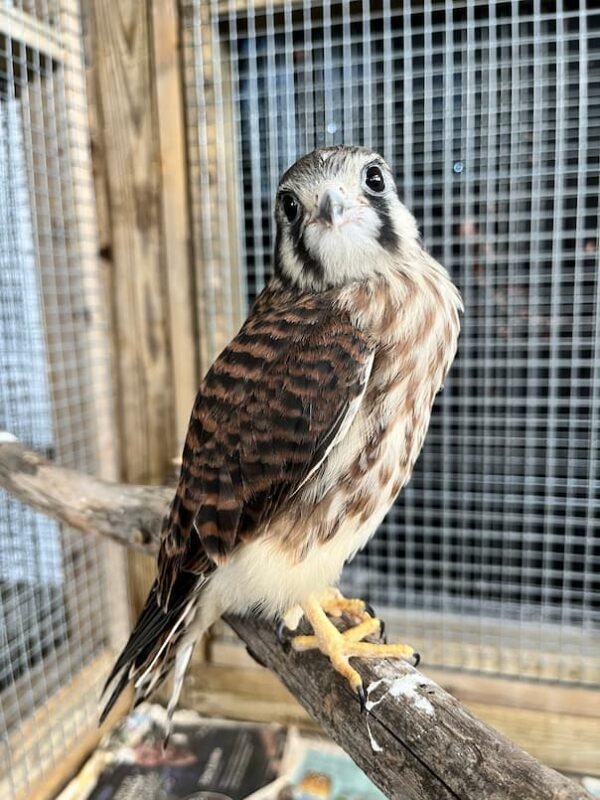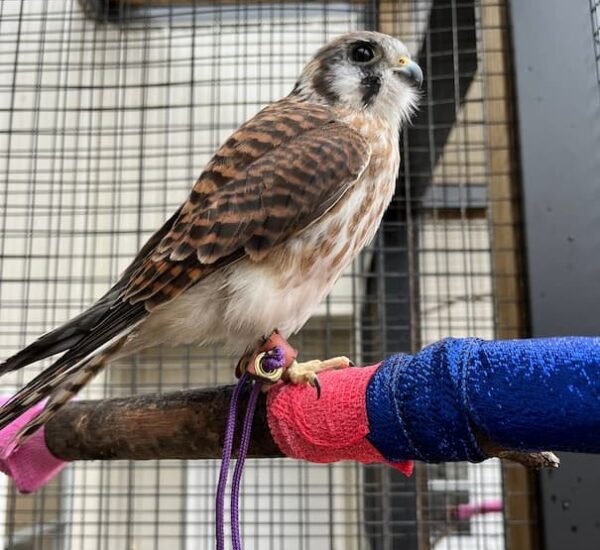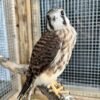A Eurasian Kestrel is a fun bird to see while bird watching. Below are some tips to help you identify Eurasian Kestrels. We have also put together a list of fun Eurasian Kestrel t-shirts, Eurasian Kestrel bird patches, birdhouses, bird feeders, binoculars, stickers, and other fun bird-watching items.
It is the smallest of the kestrels, 18–23 cm long with a wingspan of 40–45 cm. The wings are fairly short and rounded. The adult male’s upperparts are reddish brown with black spots while the underparts are unspotted and buff. The head and rump are dark blue-grey. The tail is blue-grey with black bars. The bill is dark and the feet and cere are yellow. Females are similar to the males in appearance but are a little larger and paler. Immature birds have a brown, streaked head, spots on the breast and a buff tip to the tail.
Habitat:
Found in a variety of semi-open habitats, including grasslands, agricultural lands, and semi-arid regions. They can also be found in semi-forested areas such as open woodlands or near woodland edges. Some have adapted well to a human presence, and they can be found along transportation corridors and suburban areas.
Diet:
Feeds on large insects, small mammals, small birds, and invertebrates such as earthworms.
Behavior:
They are usually solitary birds outside of the breeding season, although while in migration they may form small loose groups of up to a dozen birds. Hunting methodology is often done by hovering, with birds facing into a wind with occasional wing flapping, or through continuous flapping while they look down for prey. They will also use prominent perches and peer down to the ground, swooping out to grab small rodent that it spots. On occasion they will also use a ground-hugging flight, flying low to the ground and surprising prey that it stumbles across.
Nesting:
The nest site of a Eurasian Kestrel may be in a tree cavity, a crook in a tree, on an abandoned building, on a cliff ledge, or in the abandoned nest of another species (nests of Corvid species are often used). They do not build their own nest, although they may modify a location by adding a few sticks or other material. Three to six eggs are typically laid, with the female doing most of the incubation. Incubation takes about 30 days. After the eggs hatch, for the first week or two, the female primarily stays with the hatchlings, feeding them food that is brought by the male. Later, both parents may hunt and feed the young. Young fledge after 30 to 40 days.






